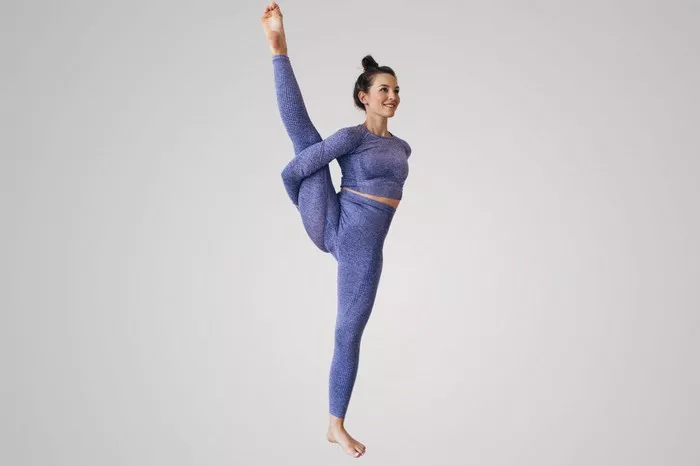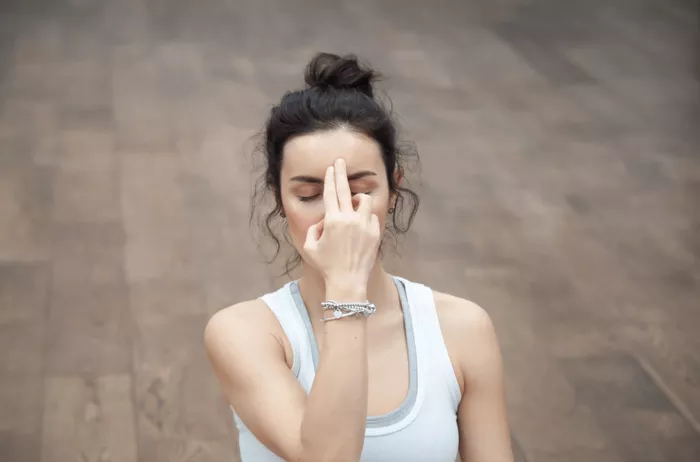Yoga is a practice that has been embraced by millions around the world for its ability to promote relaxation, mental clarity, and physical well-being. One of the most sought-after benefits of yoga is its ability to induce a deep sense of relaxation. Many people seek out yoga to de-stress, unwind, and achieve mental tranquility amidst the chaos of everyday life. But with the wide variety of poses available, how do you know which one is the most relaxing?
In this article, we will explore some of the most relaxing yoga poses, the science behind their calming effects, and how they can benefit both the body and the mind. We’ll discuss the significance of each pose, how it influences the nervous system, and why certain poses are considered to be more soothing than others.
Understanding Relaxation in Yoga
Before diving into specific poses, it’s important to understand how yoga induces relaxation. When practicing yoga, the body enters a state of balance, integrating physical postures (asanas), breathwork (pranayama), and meditation techniques. This holistic approach works on multiple levels:
Nervous System Regulation: Certain yoga poses activate the parasympathetic nervous system (the “rest and digest” response), which slows the heart rate, lowers blood pressure, and helps the body recover from stress.
Breath Control: Many relaxation-focused yoga practices involve breathwork, which can slow the breath and induce a sense of calm. Deep breathing, or diaphragmatic breathing, helps to reduce anxiety and stress, providing a quick way to relax.
Muscle Relaxation: Through long-held stretches and supported postures, yoga helps to release tension in the body. This release of physical tightness contributes to an overall sense of relaxation.
Mental Clarity: The meditative aspect of yoga encourages mindfulness, allowing practitioners to quiet their minds, focus on the present moment, and detach from overwhelming thoughts.
Top Relaxing Yoga Poses
Here are some of the most popular and effective yoga poses known for their calming, stress-relieving, and restorative qualities.
1. Savasana (Corpse Pose)
Savasana is widely regarded as the ultimate relaxation pose in yoga. In fact, many consider it to be the most important pose in a yoga practice because it helps to integrate the benefits of all the other poses. Despite its simplicity, Savasana is often challenging for beginners because it requires complete stillness and mindfulness.
How to Do It: To practice Savasana, lie on your back with your legs extended and your arms resting at your sides, palms facing upward. Close your eyes and allow your body to relax completely, releasing all tension. Breathe deeply and calmly, focusing on the rhythm of your breath. If your mind starts to wander, gently bring it back to the present moment.
Benefits: Savasana activates the parasympathetic nervous system, allowing the body and mind to relax deeply. It is especially useful for reducing stress and anxiety, as it encourages a state of deep rest. The pose is also known to help lower blood pressure, improve circulation, and promote mental clarity.
Why It’s Relaxing: The combination of stillness, deep breathing, and a focused awareness of the body encourages a meditative state. This makes Savasana an ideal pose for relaxation after a physically demanding session of yoga.
2. Child’s Pose (Balasana)
Child’s Pose is a restorative pose that offers deep physical relaxation and emotional release. It’s often used as a resting pose between more challenging sequences, but it can also be practiced independently to promote relaxation.
How to Do It: Begin by kneeling on the mat with your big toes touching and knees wide apart. Sit back onto your heels and slowly fold forward, bringing your forehead to the mat. Extend your arms out in front of you or rest them by your sides with your palms facing upward. Breathe deeply and relax into the pose.
Benefits: Child’s Pose is known for its ability to release tension in the back, neck, and shoulders, areas that are often affected by stress. It gently stretches the spine and helps relieve lower back pain. The pose also promotes a sense of safety and comfort, which can be especially helpful for those experiencing anxiety.
Why It’s Relaxing: The position of Child’s Pose encourages the body to surrender into gravity, facilitating a deep sense of calm. The gentle forward fold also stimulates the parasympathetic nervous system, helping to reduce stress and promote relaxation.
3. Legs Up the Wall Pose (Viparita Karani)
Legs Up the Wall Pose is a restorative pose that is particularly effective at promoting relaxation after a long day or a strenuous workout. It is often used in restorative and yin yoga practices.
How to Do It: Sit with one side of your body close to a wall. Slowly swing your legs up the wall as you lower your back onto the floor. Your legs should be straight up, with your back and head resting comfortably on the floor. You can place a cushion or blanket under your hips for added support. Allow your arms to rest at your sides, palms facing upward.
Benefits: This pose helps to improve circulation, reduce swelling in the legs, and alleviate tension in the lower back. It is also effective at calming the nervous system and reducing feelings of stress and anxiety. Legs Up the Wall Pose has been known to aid in digestion and relieve symptoms of insomnia.
Why It’s Relaxing: The inversion aspect of this pose encourages blood to flow toward the upper body and head, which can have a soothing effect on the nervous system. By promoting deep relaxation and slowing the heart rate, this pose is highly effective for calming the mind.
4. Reclining Bound Angle Pose (Supta Baddha Konasana)
Reclining Bound Angle Pose is a gentle, restorative pose that involves lying on your back with the soles of your feet together and your knees open to the sides. This pose is often used to relieve tension in the hips and groin and is considered highly relaxing.
How to Do It: Begin by lying on your back with your knees bent and the soles of your feet together. Let your knees fall open to the sides. You can place pillows or blankets under your knees for added support if needed. Rest your arms at your sides with your palms facing upward. Breathe deeply, allowing the body to relax into the posture.
Benefits: This pose opens the hips, which can help release pent-up tension from prolonged sitting or physical activity. It also promotes deep breathing and relaxation, calming both the body and mind. Supta Baddha Konasana is great for reducing feelings of stress and anxiety while encouraging a sense of emotional and physical openness.
Why It’s Relaxing: The openness of the hips and chest encourages deep relaxation, while the position of the body creates a sense of safety and calm. This pose is often practiced in yoga before or during meditation to promote mental clarity and stillness.
5. Cat-Cow Pose (Marjaryasana-Bitilasana)
Cat-Cow Pose is a dynamic, gentle flow that involves moving between two positions: Cat Pose (a rounded spine) and Cow Pose (an arched spine). This sequence is commonly used in Vinyasa yoga but can also be incorporated into restorative practices for its calming effects.
How to Do It: Start on all fours with your wrists directly under your shoulders and your knees under your hips. Inhale as you drop your belly toward the floor, lifting your chest and tailbone toward the ceiling (Cow Pose). Exhale as you round your spine, tucking your chin toward your chest (Cat Pose). Continue moving between these two positions, coordinating the movement with your breath.
Benefits: Cat-Cow Pose is effective for releasing tension in the spine, neck, and shoulders. It also helps to increase flexibility in the back and promotes proper alignment. This pose can be particularly helpful for relieving tension and stress held in the upper back.
Why It’s Relaxing: The flowing, rhythmic nature of Cat-Cow Pose encourages relaxation by creating a gentle movement of the spine, which can reduce physical tension. When combined with mindful breathing, this sequence can calm the nervous system and promote a feeling of serenity.
6. Forward Fold (Uttanasana)
Forward Fold is a simple yet effective pose that stretches the hamstrings, calves, and spine. It is often used to relieve tension in the back and neck, making it a great option for relaxation.
How to Do It: Stand with your feet hip-width apart. Hinge at your hips and fold forward, bringing your chest toward your thighs. Let your head and neck relax, and allow your hands to rest on the floor, your shins, or your feet. You can bend your knees slightly to ease tension in the lower back and hamstrings.
Benefits: Forward Fold offers a deep stretch for the back and legs, helping to release tension and improve flexibility. It also encourages deep, calming breaths that can slow the heart rate and promote relaxation.
Why It’s Relaxing: The forward bend of this pose encourages a sense of surrender and relaxation, which can be especially calming for the nervous system. The stretching of the spine and legs also helps to release physical tension, making it a great pose for unwinding.
7. Seated Forward Fold (Paschimottanasana)
Seated Forward Fold is a gentle seated stretch that targets the spine, hamstrings, and lower back. It is often used in both restorative and more active yoga practices to promote relaxation and flexibility.
How to Do It: Sit on the floor with your legs extended straight in front of you. Inhale as you lengthen your spine, and then exhale as you gently fold forward, reaching for your feet, ankles, or shins. Keep your back as straight as possible as you fold, avoiding any rounding of the spine.
Benefits: This pose helps to stretch the hamstrings and lower back, reducing stiffness and promoting flexibility. It also calms the nervous system, making it an excellent pose for relaxation.
Why It’s Relaxing: The forward fold encourages a sense of release in the body, especially in the spine and hamstrings. Paired with deep, slow breathing, it has a calming effect on the mind and body.
Conclusion
Relaxation is a central aspect of yoga practice, and several poses can help induce a state of deep calm and tranquility. Whether you’re seeking to reduce stress, release physical tension, or quiet your mind, poses like Savasana, Child’s Pose, Legs Up the Wall, and Reclining Bound Angle Pose are among the most effective for promoting relaxation.
The beauty of yoga is that it offers a variety of poses to suit different needs and preferences. By incorporating these relaxing poses into your practice, you can cultivate a greater sense of peace, balance, and well-being, both on and off the mat. So, the next time you need to unwind or find some calm in your busy life, remember these restorative poses to help you relax and recharge.
Related Topics:























